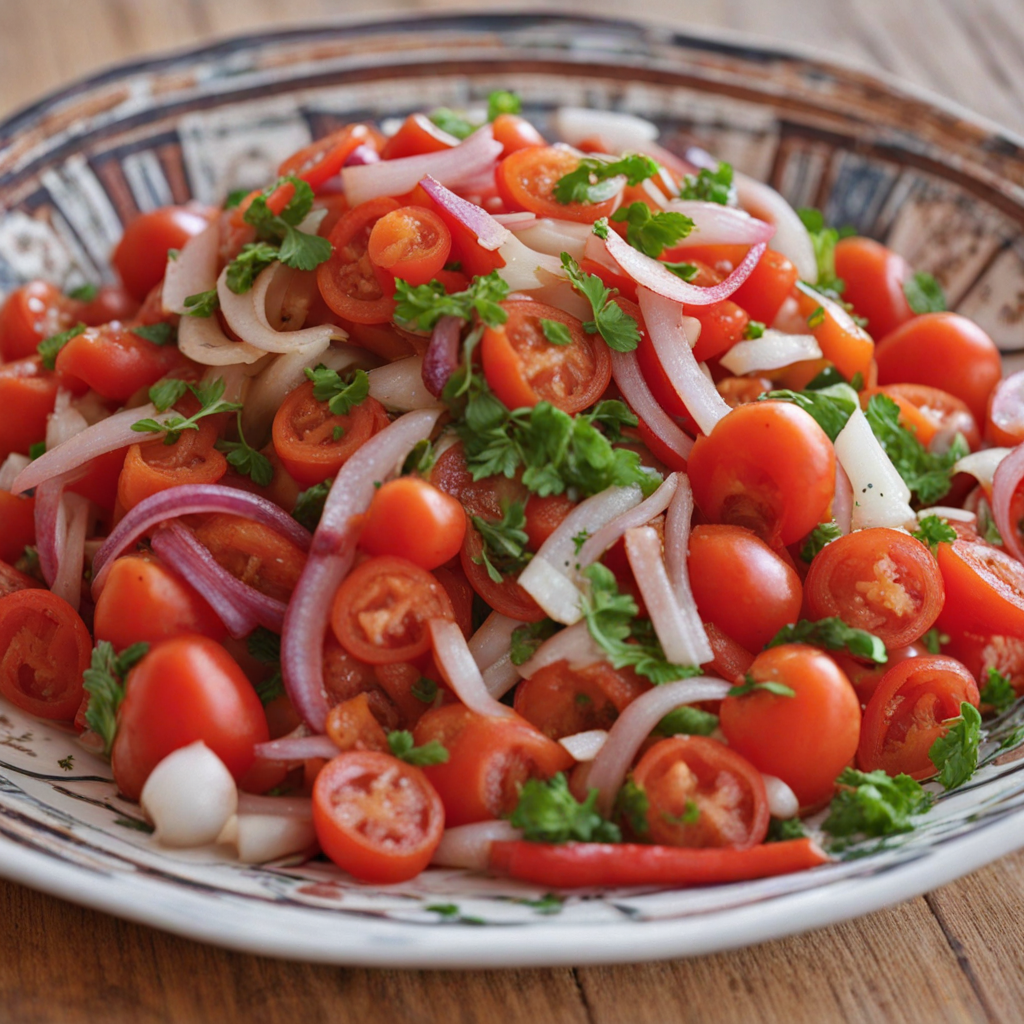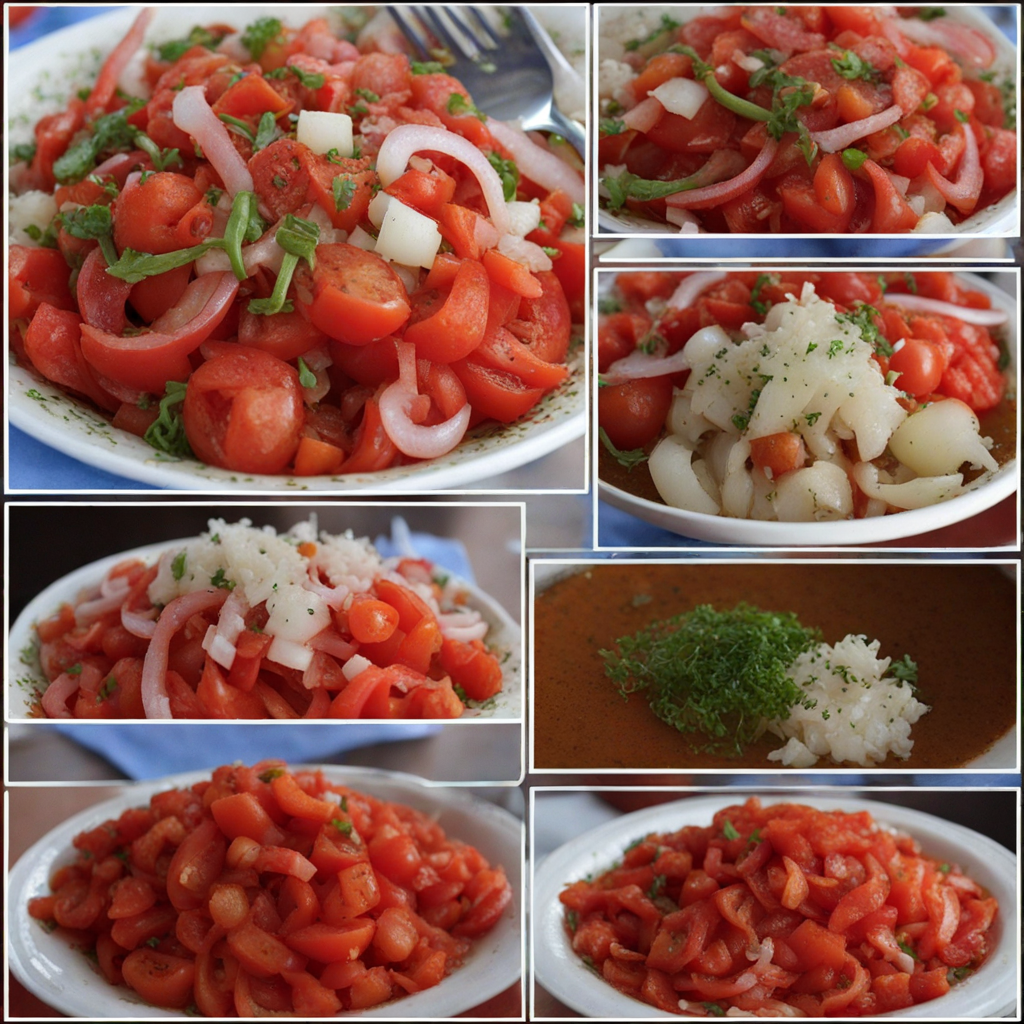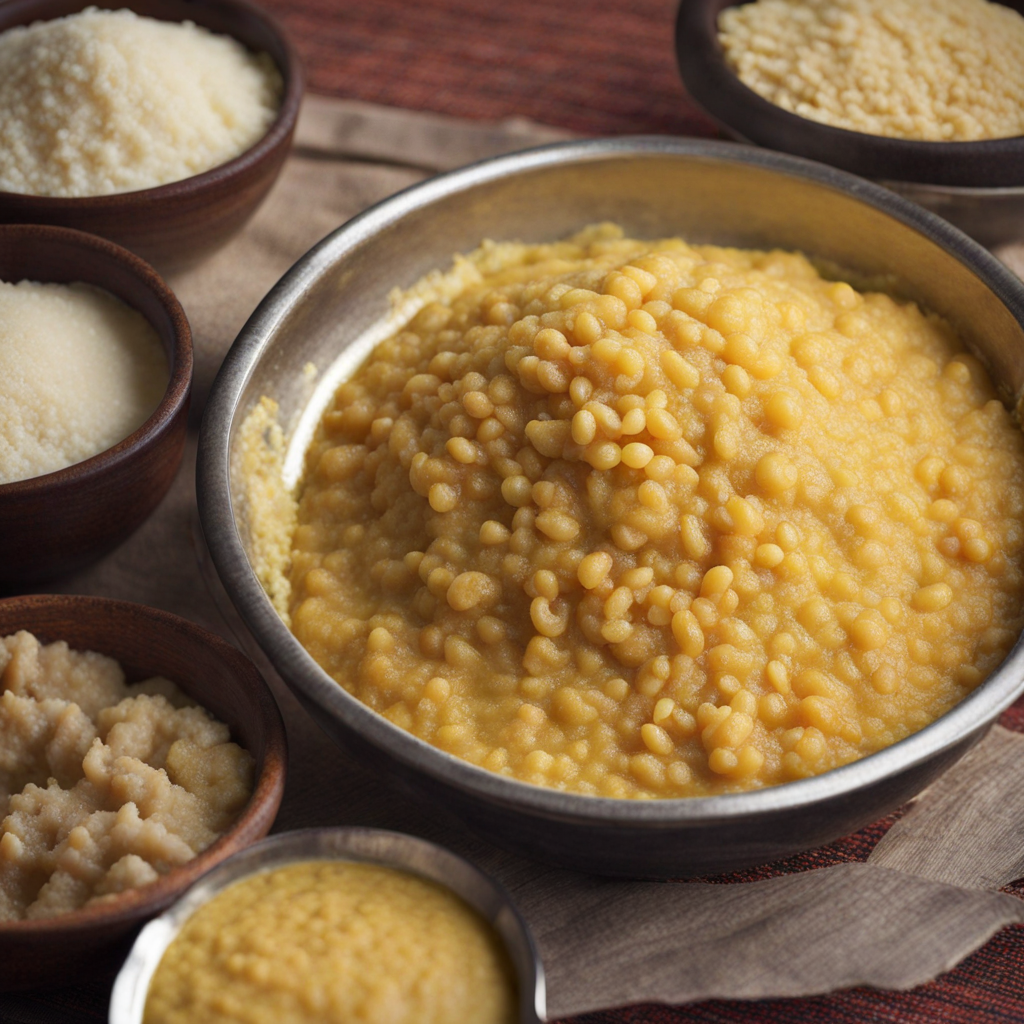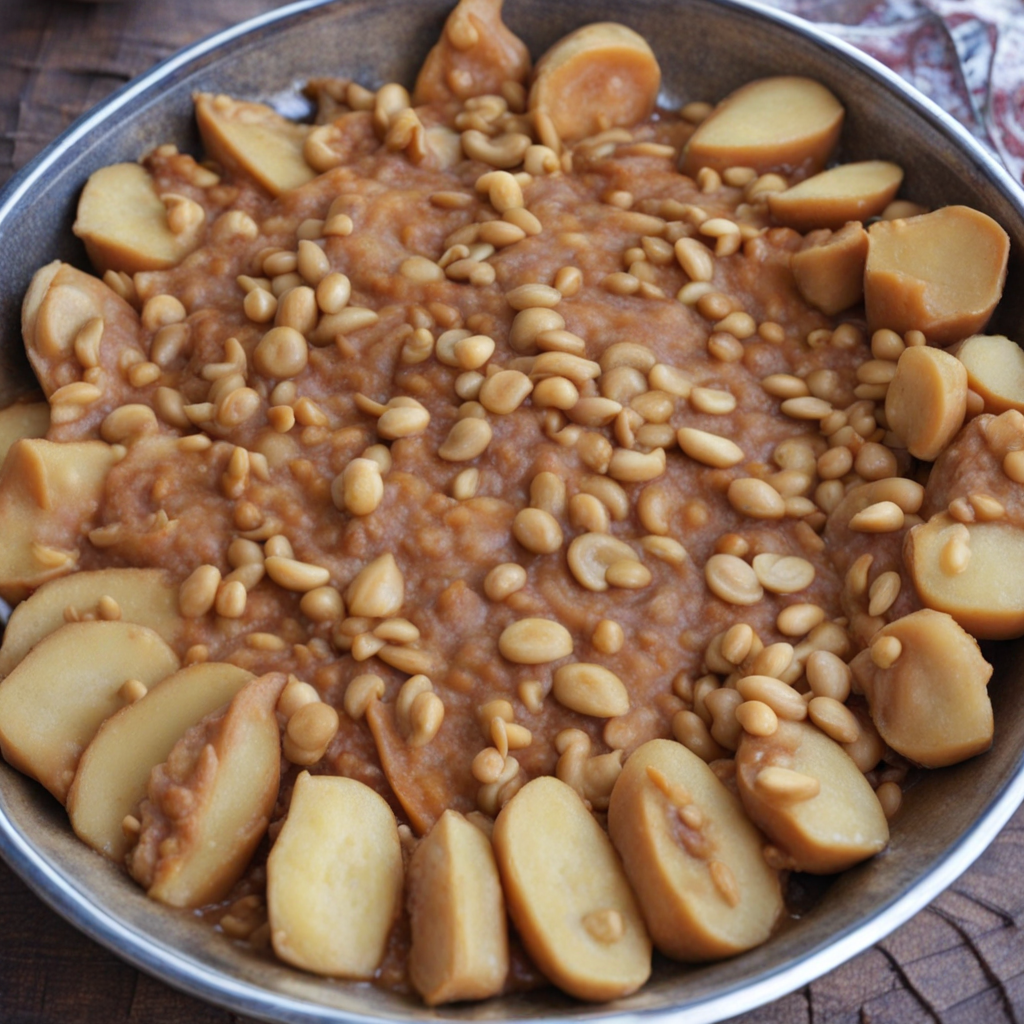Kachumbari
Kachumbari is a vibrant and refreshing salad that hails from Malawi, showcasing the country's rich agricultural heritage and love for fresh ingredients. Typically made with finely chopped tomatoes, onions, and green chilies, this dish bursts with color and flavor. The combination of these ingredients creates a harmonious balance of sweetness from the tomatoes and a slight heat from the chilies, making it a delightful accompaniment to many Malawian meals. The crunch of the onions adds a pleasant texture that elevates the overall experience of the dish. One of the key elements of Kachumbari is its versatility. While the basic recipe remains consistent, variations can include additional ingredients such as avocados, bell peppers, or even citrus fruits like lime for a zesty twist. This adaptability allows Kachumbari to be customized according to personal taste preferences, making it a beloved staple at gatherings, celebrations, and everyday meals alike. It is often served alongside grilled meats, fish, or as a refreshing side to starchy staples like nsima, a traditional maize porridge. In essence, Kachumbari embodies the spirit of Malawian cuisine, where fresh, local produce takes center stage. The salad not only tantalizes the taste buds but also brings people together, as it is often enjoyed in communal settings. With each bite, one can experience the vibrant flavors of Malawi's culinary landscape, making Kachumbari a must-try for anyone looking to explore new and exciting tastes.
How It Became This Dish
Kachumbari: A Culinary Jewel of Malawi Kachumbari is a vibrant and refreshing salad that has become a staple in the culinary landscape of Malawi. Characterized by its colorful blend of fresh ingredients, such as tomatoes, onions, and chili peppers, kachumbari is not just a dish; it is a reflection of Malawi’s rich cultural heritage and agricultural bounty. To fully appreciate kachumbari, it is essential to explore its origins, cultural significance, and evolution over time. #### Origins of Kachumbari Kachumbari has its roots in East Africa, where the practice of mixing fresh vegetables and fruits into salads has been prevalent for centuries. The term "kachumbari" is derived from the Swahili word "kachumbari," which means "salsa" or "salad." Although the dish is commonly associated with Malawi, variations of kachumbari can be found throughout East Africa, particularly in countries such as Tanzania and Kenya. The ingredients used in kachumbari are a testament to the agricultural heritage of Malawi. The country is blessed with a favorable climate and fertile soils, allowing for a diverse range of crops. Tomatoes, onions, and green chili peppers are among the most common ingredients in kachumbari, and these vegetables thrive in Malawi's warm and sunny conditions. Historically, kachumbari was likely a dish that evolved from the necessity of preserving the seasonal harvests of fresh vegetables. Villagers would create salads to accompany main dishes, maximizing the use of locally available produce. Over time, kachumbari became an integral part of Malawian cuisine, often served alongside staple dishes such as nsima, a thick porridge made from maize flour. #### Cultural Significance In Malawi, food is deeply intertwined with cultural identity and social practices. Kachumbari holds a special place in the hearts of Malawians, serving as a symbol of hospitality and community. It is commonly prepared during festive occasions, family gatherings, and communal meals, where it is shared among friends and loved ones. The preparation of kachumbari often involves communal participation, reflecting the values of togetherness and cooperation. Family members and friends gather to chop vegetables and mix ingredients, transforming the preparation of food into a social event. This collaborative spirit is emblematic of Malawian culture, where communal bonds are celebrated through shared meals. Additionally, kachumbari is often enjoyed during celebrations like weddings, birthdays, and traditional ceremonies, where it symbolizes abundance and prosperity. Its lively colors and fresh flavors make it a favorite among guests, enhancing the overall dining experience. It is not uncommon to see kachumbari served alongside grilled meats, fish, or as a topping for various dishes, showcasing its versatility and appeal. #### Development Over Time Over the years, kachumbari has evolved, adapting to changing culinary trends and the globalization of food culture. While the traditional version typically includes basic ingredients like tomatoes, onions, and chili peppers, modern interpretations of kachumbari have emerged, incorporating additional ingredients to enhance flavor and texture. In urban areas and among the younger generation, variations of kachumbari may include avocado, bell peppers, and even fruits like mango or pineapple, adding sweetness and complexity to the dish. The incorporation of these ingredients reflects the influence of globalization and the availability of diverse produce in local markets. Moreover, the rise of health consciousness has also impacted the way kachumbari is perceived and prepared. As people become more aware of the benefits of fresh vegetables and salads, kachumbari has gained popularity as a healthy, low-calorie accompaniment to meals. Its reputation as a nutritious dish has made it a favorite among those seeking a balanced diet, further solidifying its place in contemporary Malawian cuisine. #### Kachumbari in the Global Context In recent years, kachumbari has garnered attention beyond Malawi's borders, finding its way onto international menus and food blogs. As global interest in African cuisine grows, kachumbari is celebrated not only for its delightful flavors but also for its cultural significance. Food festivals and cultural events have introduced kachumbari to new audiences, allowing people from different backgrounds to experience the essence of Malawian hospitality. In fusion cuisine, chefs have experimented with kachumbari, blending it with other culinary traditions, further enhancing its appeal and versatility. Through these global exchanges, kachumbari has become a culinary ambassador for Malawi, showcasing the country’s agricultural richness and culinary creativity. It serves as a reminder of the interconnectedness of food, culture, and community, transcending geographical boundaries while remaining rooted in its Malawian origins. #### Conclusion Kachumbari is more than just a salad; it is a vibrant expression of Malawi’s cultural heritage, agricultural abundance, and communal spirit. From its humble origins in local kitchens to its recognition on global platforms, kachumbari has evolved while retaining its core values of freshness and togetherness. As Malawians continue to prepare and share kachumbari, they not only celebrate their culinary traditions but also pass on a legacy that reflects their identity and connection to the land. Whether enjoyed at a family gathering, a festive celebration, or a casual meal, kachumbari remains a beloved dish that embodies the heart and soul of Malawian cuisine—a true culinary jewel.
You may like
Discover local flavors from Malawi







